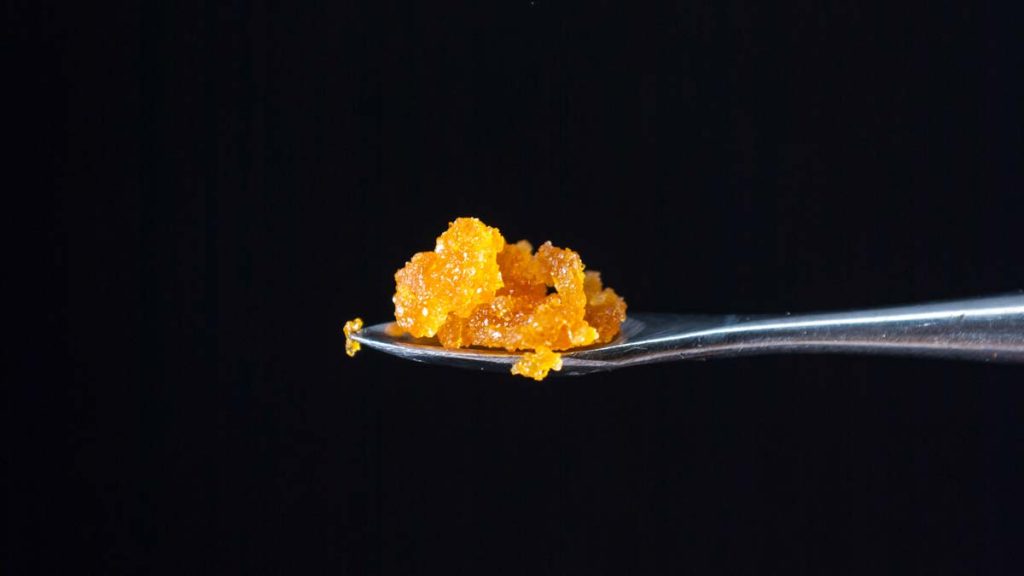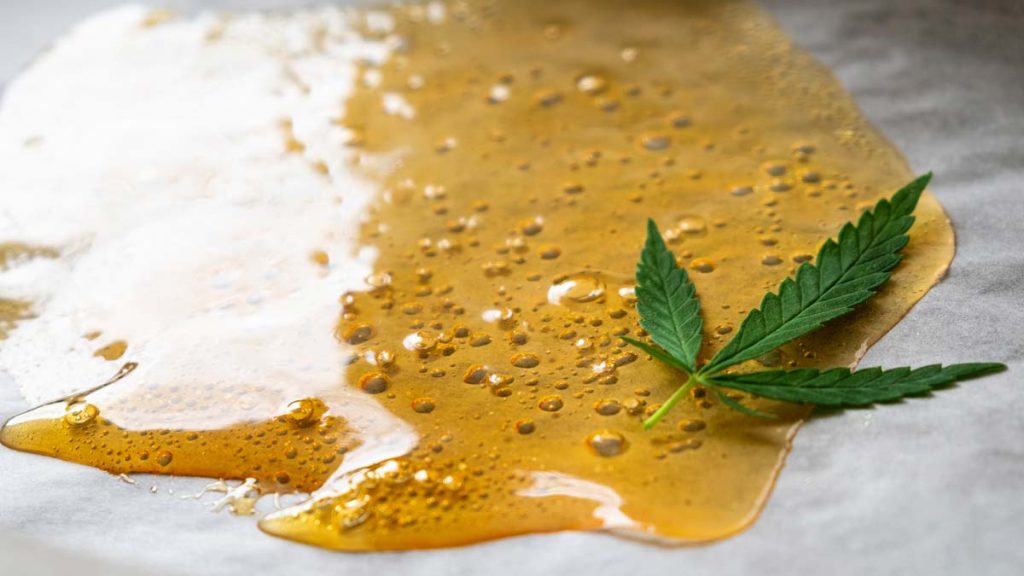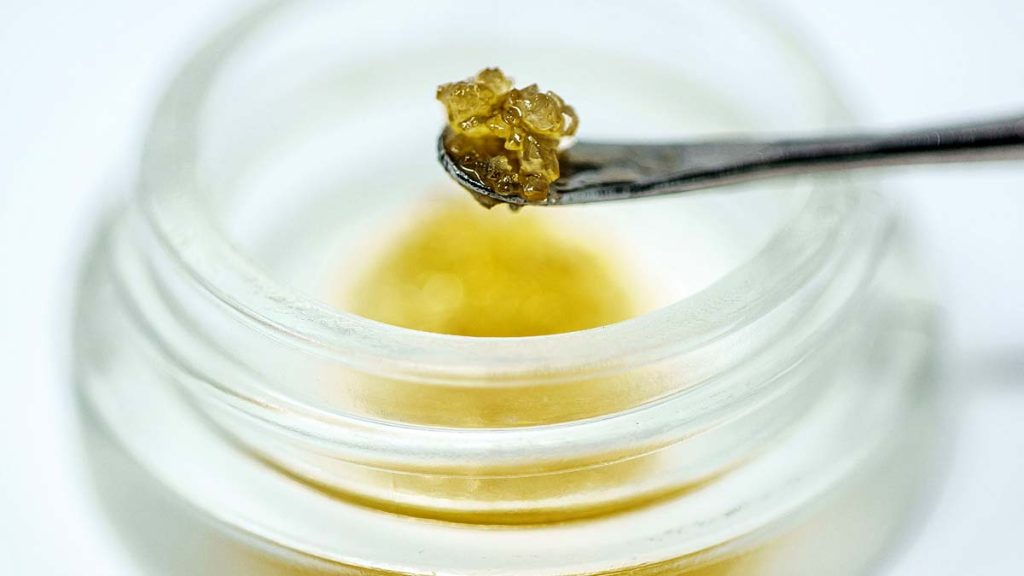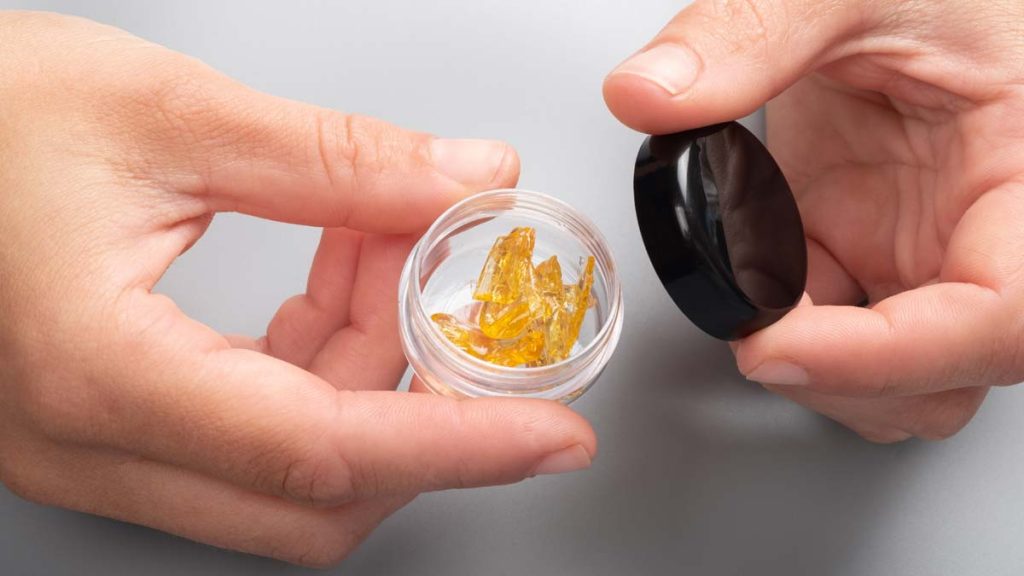The Ultimate Guide On Weed Dabs

This post is part of our Best Dispensaries in Arizona series, brought to you by SWC Arizona.
Weed dabbing has become a popular craze in the cannabis landscape in the 90’s, but it is not as understood and often considered more intimidating than smoking traditional flowers or eating THC edibles. Though relatively new compared with other forms of cannabis, dabbing has become one of the most preferred ways to experience the beneficial properties of cannabis, in amplified form.

But what is a weed dab? What does it look like? Does it smell the same? Weed dabs–also known as cannabis concentrates–can look similar to wax, cake batter, honeycomb, or oil. Shatter, wax, budder, crumble, rosin, and live resin are all different types of cannabis dabs, which differ greatly in texture, potency, smell, and appearance. Dabs tend to carry an herby, natural odor that dissipates rather quickly after smoked. As for its appearance–we will get to that later.
Table of Contents
- Complete Beginner’s Guide to Weed Dabs: Everything You Need to Know
- What is a Weed Dab?
- History of Dabbing
- How are Weed Dabs Made?
- Different Types of Dabs
- Required Equipment for Dabbing
- How to Dab Safely: Step-by-Step Guide
- The Effects of Dabbing
- Pros and Cons of Weed Dabbing
- What to Expect When Dabbing for the First Time
- Give Dab a Stab
Complete Beginner’s Guide to Weed Dabs: Everything You Need to Know
Whether you’ve had a dab or two at a college party or have never set eyes on a dab rig, we are here to school you in all things cannabis concentrates. If you’re planning to dabble in the dab world, it’s crucial to know what you’re getting yourself into, because dabbing is not for the faint of heart. Due to its high concentration, it can be somewhat dangerous if not handled properly, and you could consume way more than you meant to if you’re not certain what you’re doing. That’s why we wrote this article–to help you have the best dab experience ever, and feel prepared going into it.
Let’s get down to business, shall we?
What is a Weed Dab?
So, what is a dab of weed? A marijuana dab is a concentrated form of cannabis, wherein cannabis trichomes are extracted and compressed through an extraction process. During this process, essential oils and cannabinoids are separated from the cannabis plant. This separation makes for a more potent substance. The extracts are refined, which deliver a clean and smooth experience for dab users. The purity also delivers a more intense high with a very small amount.
But hold up, wait. What are trichomes, and why do they matter? Trichomes are the sticky resin glands on the buds, stems, and leaves of cannabis or hemp flower. They contain a full-spectrum of cannabinoids–such as THC and CBD—as well as terpenes, and other beneficial, therapeutic compounds. Through the extraction process, these trichomes are collected, cleaned, and formed into the dabs we see today.
A dab looks like a glob of sticky honey, or more closely resembles amber resin. Aside from the extraction process, appearance, and method of smoking, the difference between dabs and regular weed are their potency and effectiveness in getting you high. Due to their different composition and method of extraction, dabs are loads stronger than smoking weed. Compared with flower–which offers anywhere from 10-25% THC levels on the higher end–concentrated cannabis extracts and dabs have around 60-80% of THC. Let that sink in for a second.
Another benefit–especially for those who don’t like to smoke–is that most types of weed concentrates can be vaporized or even eaten, as opposed to smoked. Another plus is that extracts require less product to get you a potent high, so more bang for your buck.
History of Dabbing

This method of consuming cannabis seems pretty complicated compared to traditional smoking, so how exactly did dabbing come to be, and who discovered it?
Compared with all other methods of consuming cannabis, dabbing weed is one of the newer methods, yet don’t let its emergence of popularity fool you–dabs have been around for a long time. In fact, dabs can be linked back to centuries old stories, though back then it was called hashish. Many manuscripts and ancient texts make mention of Hashish, though it was thought to have originated in Arabia and Persia and popularized in 900 A.D. Hashish is another type of cannabis concentrate–compressed, extracted, and refined herbal trichomes. It is a psychoactive drug. Dabs are essentially a modern development of hashish.
Hashish globe trotted through Europe and botanists began to take an interest, promoting its health benefits and medicinal value. Fast forward several all the way to the 1900’s, where American chemist Roger Adams first produced cannabinoid isolates, isolating CBD and CBN from cannabis flower. This discovery of the ability to manipulate cannabis and convert CBD to THC was used by many pioneers in the world of extracts and concentrates.
Unfortunately dabs got a bad rap after they were tested on human subjects in government run experiments, with the Edgewood Arsenal Experiments and the MK-Ultra program in 1955. This experimentation and their undesirable outcomes demonstrating the adverse effects of extensive use initiated a nationwide negative opinion and skewed understanding of cannabis concentrates, as well as tainted the government policies on drugs.
In the 20th century, scientist Stanley P. Lovell discovered how to generate the first organic THC concentrate, aside from hash, using alcohol as the primary solvent. It was harsh to consume and lacked flavor, but it was a step in the right direction. Fast forward to 1970–The Summer of Love. At this time period, the Brotherhood of Eternal Love–a network of cannabis and LSD enthusiasts and smugglers–was on a mission to spread peace, love, and acid into the world. One of the Brotherhood of Eternal Love’s lead chemists–Ronald Stark–is said to be the founder of modern day dabs and butane hash oil.
Strangely enough, dabs didn’t gain too much popularity until a few decades later in the 90’s. Since then, other forms of dabbing have emerged and cannabis culture has become more accepting of concentrates as a whole. There also has been experimentation with different methods of extraction of trichomes and whipping techniques, which is why there is such a variety in concentrates and extracts.
Of course, there are many other places dabs have traveled through space and time, but this is to give you an idea that cannabis concentrates spread across the world over centuries and were recognized and widely used for their potential health benefits.
How are Weed Dabs Made?
Concentrated cannabis is made differently than traditional edibles or flowers, and let’s just say the process is much more dangerous. To make concentrates, a solvent–like liquid butane or supercritical CO2–is used to extract the THC, CBD, and other cannabinoids from the plant. This allows for separation from the plant, which is dissolved right into the butane, resulting in a butane-THC solution, which is then compressed through a filter and left to rest on a sanitized tray. The outcome? A very sticky oil with a thick viscosity.
But why butane? This flammable hydrocarbon gas has the ability to dissolve trichomes and remove extract hydrophobic psychoactive compounds from the plant material, resulting in a highly potent concentrate. There are other methods such as ethanol extraction, hydrocarbon extraction, or the safer, cleaner, solventless ice water extraction method, that can act similarly and produce similar results. The common extraction techniques used to produce dabs include whipping techniques that introduce air into the concentrates–used in variations like crumble and budder.
Solventless cannabis concentrates are preferred by those who like a cleaner product, as the extraction process does not use a harsh solvent like butane in the process of making the concentrate. The ice water extraction method, for example, involves placing cannabis flower–ideally fresh-frozen–in a fine mesh bag with ice and water, where it will be agitated and spun in a centrifugal motion. The interaction between the weed plant and the ice forces trichome heads to physically separate from the cannabis flower, which is then sieved via mesh screen filters. Once filtered and laid out on a dish or tray, viola, a cannabis dab concentrate will form.

Different Types of Dabs
Now that we’ve answered the question–”What is a weed dab”–it’s time to understand the difference between types of cannabis dabs. Depending on your individual preferences, you’ll likely gravitate toward a specific type of concentrate. THC concentrates vary in how they are made, what extraction process is used, and what type of high they deliver. Concentrates also come in various textures, flavors, and aromas. Let’s take a closer look at the differences.
Starting off with concentrates that are great for beginners, wax and budder or badder (think cake batter). Wax is highly viscous, similar to honey or–dare we say–ear wax (gross, we know). Due to its sticky, sappy nature, it is much easier to manipulate than more brittle forms of concentrate–such as shatter–and is a great starting point for beginner dabbers.
Budder/Badder, as the name suggests, is more buttery and creamy in texture than other types of dabs–like a creamy peanut butter, and slightly less viscous than wax. It’s actually even easier to work with than straight wax because it is a bit less sticky. The process of making budder is through whipping and purging the extract of any solvents, giving it that nice whipped consistency.
Sugar wax is another no brainer–it looks like sugar. Well, wet sugar. This type of concentrate is somewhat similar to shatter, and can range in color–everything from a faint light yellow to a dark amber. The consistency and texture of sugar wax is quite different from shatter however. It is thicker and easier to manipulate, and most importantly rich in flavor.
Shatter–a relatively newer form of weed concentrate that didn’t gain popularity until the 1990’s–is solid, brittle, and has a translucent, amber-colored hue. Shatter is among the purest and most potent forms of cannabis concentrates, meaning it will send you to the skies and get you flying high, so proceed with caution. If you are a beginner dabber, you may want to watch and learn from a seasoned professional before taking your own hand at using shatter.

Crumble is–you guessed it–more crumbly than other types of concentrates, with a relatively similar texture to honeycomb. Crumble is slightly drier than budder, but still much easier to work with than its more brittle counterparts like shatter. You’ll often find crumble as the concentrate of choice to top a bowl off or sprinkle into a joint.
Shatter, wax, and budder are all butane hash oils (aka BHO’s). The process for creating them all is somewhat similar, but there are other concentrates on the market that don’t require a solvent during the extraction process. Rosin, unlike other concentrates, is made without solvents. Instead of using alcohol or CO2, heat and pressure are applied to cannabis flowers, producing a sap-like concentrate. Some consider this cleaner and potentially more potent than other concentrates due to its method.
Live Resin is another diverse concentrate made from fresh, frozen cannabis flowers rather than dried flowers. This process allows for more terpenes to be captured, resulting in a deliciously aromatic and flavorful dab. When compared with Live rosin, it’s less expensive but similar in benefits and clean factor.
Terp sauce is another type of concentrate that typically is liquid, or runny (hence the word sauce) and is usually vaporized or dabbed.
All of these concentrates have similar but amplified effects to traditional weed smoking, including enhancing mood, promoting relaxation, increasing focus, and reducing muscle tension and stress.
So now that you know what type of dabs are out there, the next step is getting your setup and equipment situated.
Required Equipment for Dabbing
There are different ways to consume cannabis, and some equipment for dabbing is required. You don’t need a fancy dab set up–because some dab rigs can have quite the high price tag. You will need some essential equipment, however, to get started. You may have also heard oil rig or wax rig–no matter, they all mean the same thing. A dab rig is a small, simple water pipe that has a place to hold a dab nail opposed to a bowl piece like a bong does. It looks similar to a bubbler, and is typically made of glass but can also be ceramic, titanium, quartz, or even silicone.
Other equipment you’ll need includes a dab tool–also known as a dabber, which is usually made of titanium and flat, often double sided, used to scoop and apply the concentrate–and a carb cap (essentially a dome)–which is used to control the temperature and directional airflow when smoking concentrate. You’ll also need a blow torch to heat the oil, and water to partially fill the rig. Oh, and of course you’ll need THC concentrate in order to get high and feel the effects!
There are also electric dab rigs with electric nails, and vape pens which are even more discreet and portable, ideal for smoking concentrates on the go (but at the expense of less potency). But, if you are out of luck with these supplies, you could always resort back to an easier, more old school way to consume cannabis concentrates called hot knifing, which doesn’t require a specialized rig. Yes, it is as janky as it sounds.
Hot knifing requires you to heat two metal knives on a stove coil, or with a blow torch if you have one accessible, and then pressing your concentrate between the two knives to heat. This results in a smokey vapor that can be inhaled as it floats upward into the air. The dab rig is a more refined, classier version of this “in a pinch” method. We suggest you invest in a nice dab rig if it does end up being your jam, so you don’t have to deal with the risk of dropping a hot knife on your foot.
How to Dab Safely: Step-by-Step Guide
Just so you can go into the experience of dabbing self-assured, prepped and ready, here are some step-by-step instructions as to how to dab properly, and most importantly, safely!
- Purchase your concentrate
- Gather your supplies–dab rig, dab tool, torch, water, and your concentrates
- Set up your rig
- Do a safety check to make sure everything is clean and sanitized, nothing is broken, and that everything is secured
- Scoop out a small dab of concentrate and set aside
- Remove the dome or carb cap
- Light up your torch and blast the nail with heat
- Wait a few seconds for the nail to cool to an optimum temperature
- Place the dome over the nail and have it come into contact with the hot nail and swirl dab as you inhale
- Apply the dab to the nail
- To start, just hit it once to see how you feel after a while
- Use a cloth to protect your hand to carefully remove the dome while it’s still hot so it doesn’t get stuck inside the rig
- Relax and enjoy
- Rinse and repeat as needed
- Clean up and properly stow your rig
The Effects of Dabbing
Think you’re an expert now? Let’s examine the effects that dabbing has on the body and mind, and how it compares to other forms of cannabis consumption.
Pros and Cons of Weed Dabbing

Let’s start off with some of the cons of weed dabbing, because it is important to know what you’re getting yourself into. For one, the extraction process of cannabis concentrates is pretty dangerous, so much so that it is illegal to produce hashish from marijuan by means of chemical extraction. Consumers won’t have to worry about this, but needless to say don’t ever attempt to make cannabis concentrate at home.
Another con of weed dabbing–which may actually be a pro for some folks–is that concentrates are much more intense than other forms of weed, often containing an extreme level of THC, as stated above. Too large of a dab can cause severe paranoia, anxiety, vomiting, uncontrollable shaking, and even blackouts in extreme cases. This is exactly why you need to know what you’re doing when handling concentrates and a dab rig.
All that being said, dabbing is one of the quickest ways to reap the benefits of cannabis, and a safer alternative to smoking. Dabbing is a stronger, purer, quicker high, and has much less odor than smoke, making it a more discreet alternative. The high is almost instantaneous opposed to smoking weed, which can take around 15 minutes, or ingesting weed or applying weed topically, where effects are gradual and don’t come on for 30-60 minutes.
How you feel, of course, depends on the strain, what device you’re using, how long you inhale and how much concentration you apply, and what your tolerance is.
What to Expect When Dabbing for the First Time
Now that we go “what is a weed dab” and “how to dab” out of the way, it’s very important that what you’ll actually experience when dabbing.
Due to its potency, you’ll want to start small. Remember, you are handling a highly concentrated form of cannabis that results in a very powerful high. Inhaling too much can cause you to feel dizzy, drowsy, and in extreme cases nauseous, confused, and debilitated.
If you want to avoid overdoing it and prefer to feel euphoric, relaxed, elated, and actually enjoy your experience, it is recommended to have your first experience with a seasoned dabber who can help assist you with scooping up the right amount of concentrate and letting you know when to stop inhaling. Remember, you can always increase your tolerance, but you can’t stop feeling “too high” at the snap of your fingers.
Since the effects and sensations of dabbing for the first time can be fairly intense, take caution and consideration when engaging with dabs for the first time–or any time, really. Make sure you are in a comfortable, safe environment and don’t have any obligations for at least 8-10 hours. You should not be operating a vehicle at all while under the influence of marijuana.
Give Dab a Stab
Think you’re ready to give dabbing a go? Head on over to SWC Arizona–one of the coolest dispensaries in Tempe, Arizona and a fabulous supplier for all things related to dabbing. This unrivaled dispensary offers daily deals and weeklong offers on high grade products and super potent concentrates. They have tons of vapes to choose from as well as a wide selection of extracts from brands like Nectar Farms, Mozey Extracts, Bud Bros, Amber, and Everest Concentrates. Their easy going and highly intelligent staff are eager to help connect you with the right products, so don’t hesitate to direct your questions toward a budtender to find the best dabs for your specific goals.
Thank you and happy dabbing!

Media credits: The images in this article are provided by Adobe.







